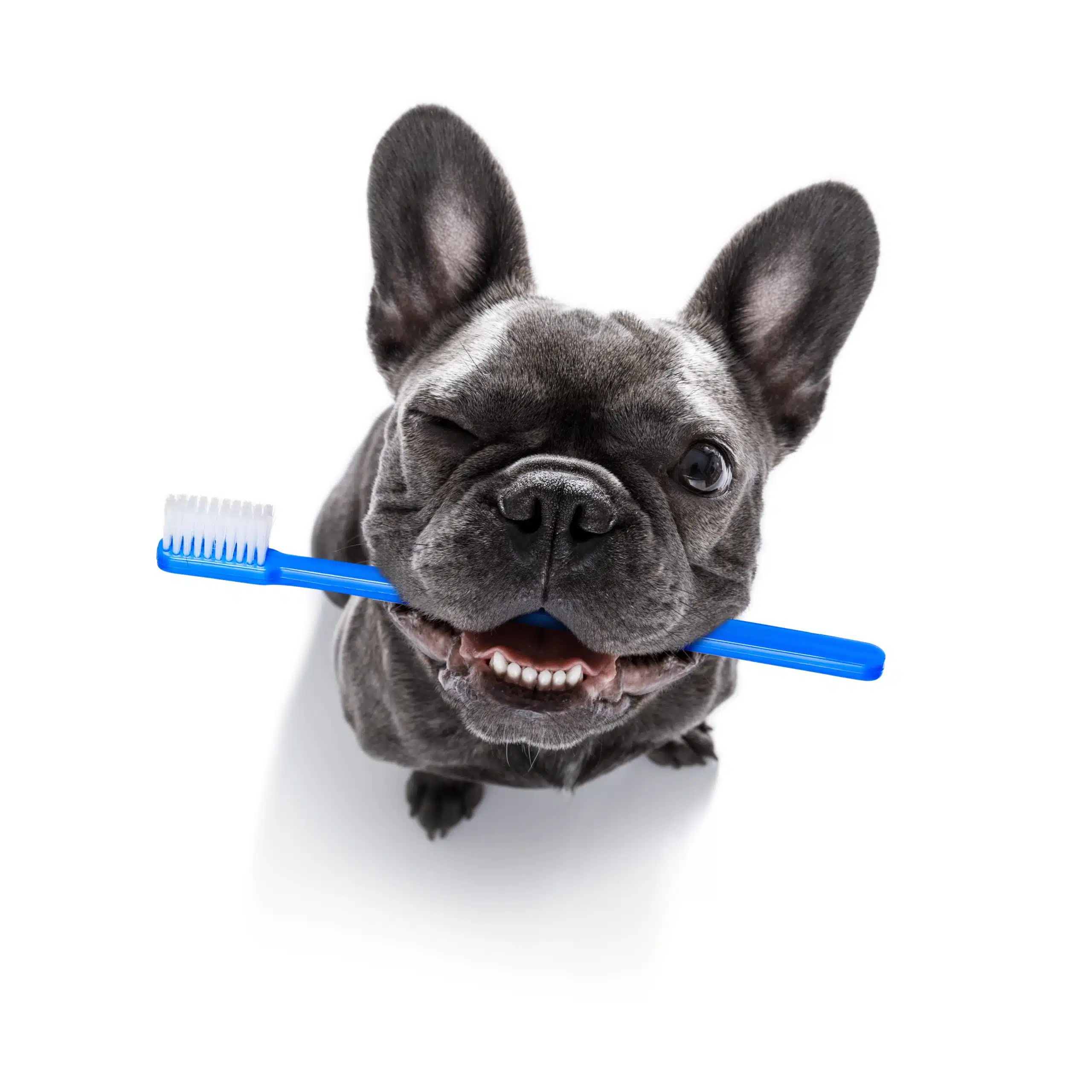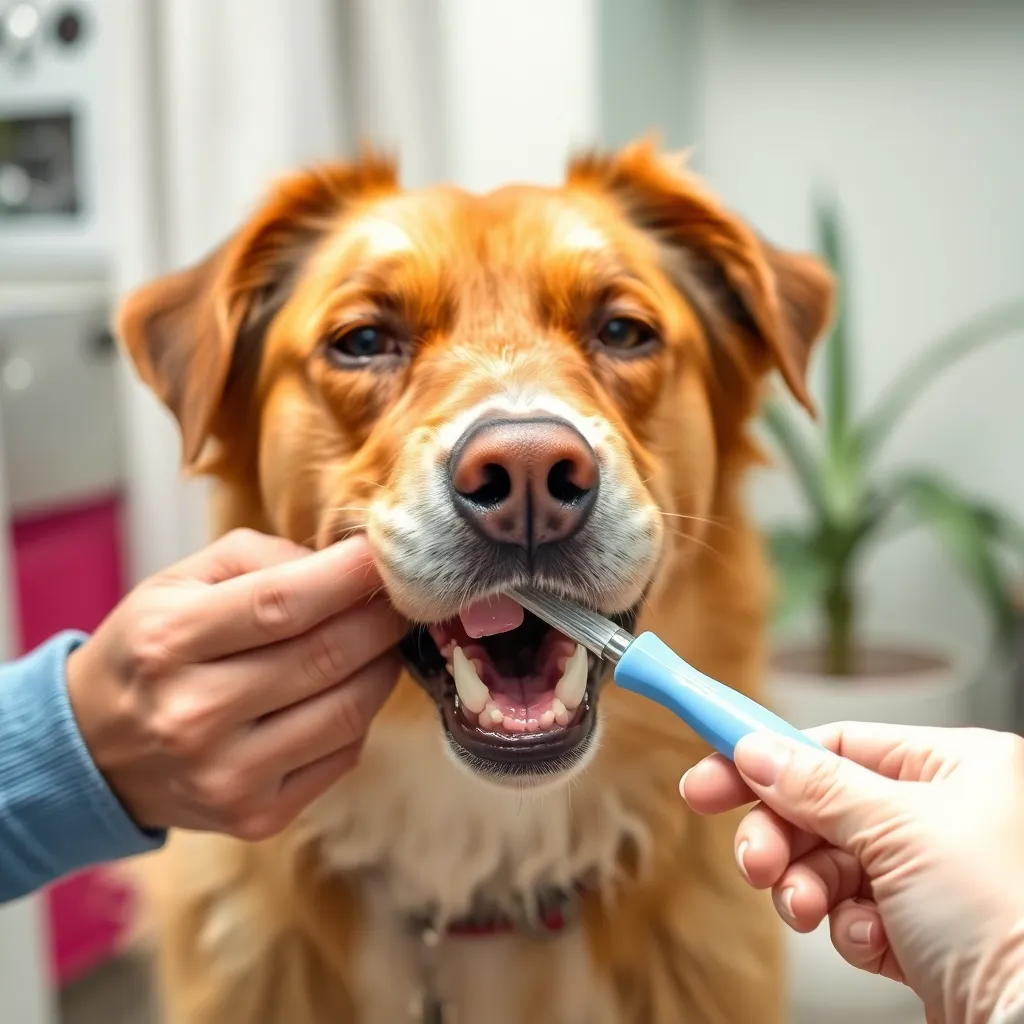Maintaining a dog’s oral health is essential not only for a fresh-smelling mouth but also for overall health and longevity. Poor dental care in dogs can lead to various health problems, from bad breath and gum disease to potentially serious infections that affect vital organs like the heart and kidneys. This guide covers everything you need to know about dental care for dogs, focusing on choosing the right toothbrush, toothpaste, and dental chews to keep your dog’s teeth clean and healthy.
Understanding Your Dog’s Dental Needs
Keeping up with dental care is crucial for your dog’s long-term health. Just like humans, dogs can develop issues such as plaque, tartar buildup, and periodontal disease if their teeth aren’t regularly cleaned. Poor dental hygiene can lead to discomfort, loss of appetite, and infections that may shorten your dog’s life.
Common Oral Health Issues in Dogs
Dental diseases in dogs often start with plaque, a sticky film of bacteria that forms on teeth. If not removed, plaque hardens into tartar, which can irritate the gums and lead to gingivitis. In severe cases, untreated gum disease can progress to periodontal disease, causing pain, tooth loss, and bacteria that enter the bloodstream, potentially impacting the heart, liver, and kidneys.
How Often to Clean Your Dog’s Teeth
Ideally, you should brush your dog’s teeth daily to prevent plaque buildup. If daily brushing isn’t feasible, aim for at least a few times per week and supplement with dental chews and routine professional cleanings. Regular dental check-ups can also catch early signs of disease, making it easier to maintain your pet’s oral health.

Choosing the Right Tools for Dog Dental Care
Picking the right tools can make the process smoother for both you and your pet. Here’s what you need to know about selecting toothbrushes, toothpaste, and dental chews that meet your dog’s needs.
Dog-Safe Toothbrushes
Not all toothbrushes are created equal, and choosing the right one can make a big difference. Look for toothbrushes specifically designed for dogs, as these have softer bristles and are shaped to fit comfortably in a dog’s mouth.
- Finger Brushes: These slip onto your finger, giving you more control and allowing for a gentler approach. Finger brushes are great for beginners or dogs new to brushing.
- Angled Brushes: Some brushes have dual heads or angled bristles to help reach those tricky back teeth, making them a good choice for dogs of all sizes.
- Electric Toothbrushes for Dogs: While less common, some pet owners opt for electric toothbrushes specifically designed for pets. They can be effective but may require a period of adjustment for your dog to get used to the vibration.

Selecting the Best Dog Toothpaste
Human toothpaste is harmful to dogs because it contains ingredients like fluoride, which can be toxic if ingested. Dog-safe toothpaste is formulated with flavors that appeal to dogs, such as poultry, peanut butter, or vanilla, making the experience more enjoyable for them. Look for enzymatic toothpaste, which contains enzymes to break down plaque without needing as much scrubbing.
Popular options often include enzymatic dog toothpaste, as well as gels that help control bacteria and reduce tartar. Try different flavors to see what your dog enjoys most, which can make brushing more pleasant.
Dental Chews and Treats as a Supplemental Aid
Dental chews and treats serve as an excellent complement to brushing, helping to clean your dog’s teeth in a way that feels like a treat rather than a chore. Chewing on these treats can scrape away plaque and massage the gums, contributing to oral health between brushings.
- Textured Chews: Chews with ridges or textured surfaces can help clean teeth and reduce plaque buildup.
- Enzymatic Chews: These chews release enzymes that help break down plaque while also providing a satisfying chew experience.
- Natural Chews: Raw bones and certain types of dental chews can be effective, though it’s essential to ensure they’re soft enough to prevent tooth fractures.
Look for dental chews with the Veterinary Oral Health Council (VOHC) seal, which indicates they meet standards for reducing plaque and tartar buildup.
Step-by-Step Guide to Brushing Your Dog’s Teeth
Brushing your dog’s teeth doesn’t have to be a difficult task. Here are some tips to make it easier and more comfortable for both you and your dog.
Getting Your Dog Comfortable with Brushing
The key to successful brushing is to start slowly and let your dog get used to the experience. Begin by allowing your dog to sniff and taste the toothpaste without trying to brush. Then, gently touch their teeth and gums with your finger, rewarding them with treats for positive behavior. Once your dog feels comfortable, introduce the toothbrush, starting with just a few teeth at a time.

Proper Technique for Brushing Your Dog’s Teeth
Start by gently lifting your dog’s lip and brushing in a circular motion. Focus on the outer surfaces of the teeth, where plaque buildup is most common. Be especially mindful of the gum line, as this is where bacteria tend to gather. Aim to brush for about two minutes, if possible, and remember to be patient, as some dogs may need time to get used to the sensation.
If your dog is particularly resistant, you may need to brush only a few teeth at a time and work up to a full session.
Alternatives to Brushing for Difficult Dogs
For dogs who won’t tolerate brushing, consider alternatives like dental wipes, which can clean the surface of the teeth. Water additives are another option; they’re poured into the water bowl to help control bacteria and freshen breath. Oral sprays can also help manage plaque buildup and are easy to apply.
Selecting the Right Dental Chews for Optimal Health
Dental chews are a great addition to any dog’s oral care routine, offering benefits that go beyond just cleaning their teeth.
Types of Dental Chews Available
There are a variety of dental chews on the market, and the best choice depends on your dog’s chewing style and size.
- Rubber Chews: Rubber chews are durable and often have textures that massage gums and scrape away plaque. Choose a size that fits your dog’s mouth to avoid choking hazards.
- Edible Chews: These are often flavored and designed to be eaten slowly, allowing their textured surfaces to clean teeth. Look for options that are easily digestible and avoid rawhide, which can be hard to digest and may pose a choking risk.
Features to Look For in Dental Chews
When choosing dental chews, it’s essential to prioritize safety and effectiveness. Ensure the chews are the right size for your dog and free of any artificial ingredients or fillers that could be harmful. Look for VOHC-approved products that have been tested for plaque and tartar reduction.
Preventing Dental Issues with a Consistent Routine
Consistency is key when it comes to maintaining your dog’s oral health. A regular dental care routine can prevent issues and make each cleaning session easier as your dog becomes accustomed to the process.
Establishing a Routine and Sticking to It
Set a schedule for brushing your dog’s teeth, aiming for at least three times per week. Use positive reinforcement and reward your dog with praise or a treat after each session to make it a positive experience. Having a set routine can also help you remember to check their teeth for any signs of problems, like redness or swelling.

Recognizing When to See a Vet
While regular brushing and dental chews can go a long way, some signs indicate the need for a professional’s help. If you notice persistent bad breath, swelling, or visible tartar buildup, it may be time for a vet visit. Veterinarians can provide deep cleanings and address any advanced dental issues.
Taking care of your dog’s teeth is one of the best ways to support their overall health and happiness. With the right tools, including a quality toothbrush, dog-friendly toothpaste, and dental chews, you can establish an effective routine that keeps your dog’s teeth and gums in top shape. Regular dental care is not only essential for preventing discomfort and disease but also contributes to a longer, healthier life for your furry friend.

After 5 years in a high pace business management role, I partnered with an e-commerce developer to start building Dog Supplies Warehouse.
Our number one goal is to make sure all products are managed and delivered to our customers door fast and accurately.
